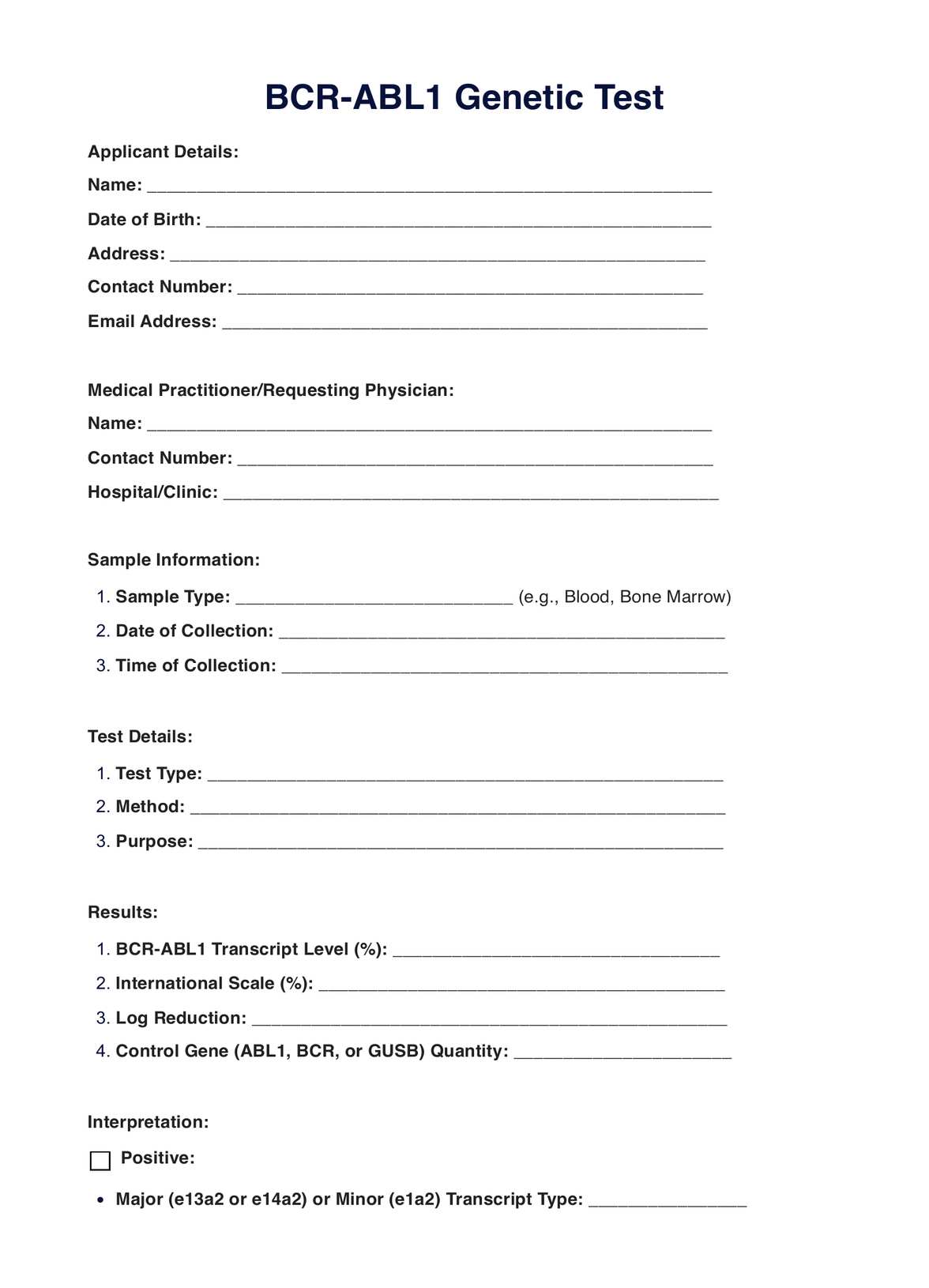Healthcare providers, such as hematologists and oncologists, typically request this test when they suspect a patient has CML or ALL.

BCR-ABL1 Genetic Test
Discover the BCR-ABL1 genetic test for diagnosing and monitoring chronic myeloid leukemia and acute lymphoblastic leukemia. Learn more today.
Use Template
BCR-ABL1 Genetic Test Template
Commonly asked questions
They're used for diagnosis, determining disease phase, and monitoring response to treatment in patients with suspected or confirmed CML or certain types of ALL.
The test is used to detect the presence of the BCR-ABL1 fusion gene in a blood or bone marrow sample.
EHR and practice management software
Get started for free
*No credit card required
Free
$0/usd
Unlimited clients
Telehealth
1GB of storage
Client portal text
Automated billing and online payments











